
CQ # 38 CENTER QUARTERLY A Journal of Photography and Related Arts $5

19thand20thCentury Photographs
Auction to be held on Tuesday, April 25, 1989 in our galleries at 502 Park Avenue, New York, NY 10022 in honor of the 150th Anniversary of Photography. For further information regarding this specialty sale, please contact Claudia M. Gropper or Monika Half at 212/606-0490. Hard-bound catalogues may be ordered from Christie's Publications (718/784-1480), 21-24 44th Avenue, Long Island City, NY 11101.
Gertrude Kasebier, Happy Days, platinum print, 1902, 8 x 6½ in.
Provenance: Kascbier's great grand-daughter.
Estimate: SI0,000-SIS,000
CHRISTIE'S NEWYORK
~CENTER
CENTERQuarterlyis publishedby the Centerfor Photographyat Woodstock((PW), 59 Tinkerltreet, Woodstock,NY12498.(914)679-9957.Copyright1989,the Centerfor Photography at Woodstock.Allrightsreserved.Nopart of the contentsmaybe reproduced withoutwrittenpermissionof the publisher.Allworksillustratedin the Quarterlyare copyrightedby the individualartistswhoproducedthem;copyrightfor essaysbelongsto the authors.Allopinions,ideas,and illustrationsare thoseof the writersand artists themselvesand do not in anywayrepresentofficialpolicyof CPWor its membership.All manuscriptsandart worksubmittedmustincludeIAIEfor return.CPW,whiletakingall reasonablecare,cannotbe responsiblefor unsolicitedmaterials.IIIN0890-4634
Editor
AssistantEditor
CopyEditor
AdvertisingManager
Printer
Typesetting
Production

KathleenKenyon
BethAnnHill
JoanMunkacsi
ColindaTaylor
Becotte& GershwinPrinting
AlanMcKnight
AEAdvertising
(PWis a not-for-profiteducationaland arts organizationwithprogramsin photography, film,video,and relatedarts.Aswellas publishingthe CENTERQuarterly,CPWoffersa year-roundexhibitionseries,the four leasonsfilm Program,summerworkshops,regional grants,a darkroom,permanentarchives,and library.TheCenterreceivesfundsfromthe NewYorkltate Councilon the Artsand the NationalEndowmentfor the Arts,as wellas manymajorcorporateand private·donors.CPWdoesnot discriminateon the basisof sex, race,color,handicap,nationalor ethnicoriginin the administration of its educational policies,scholarshipprograms,or otherschooladministeredprograms.
THECENTERFORPHOTOGRAPHY AT WOODSTOCK
STAFF
ColleenKenyon, ExecutiveDirector
BOARDOFDIRECTORS
PatriciaCarroll
HowardGreenberg
SharonHoran
EllenK.Levy
ADVISORYBOARD
CornellCapa
PhillipCavanaugh
A. D. Coleman
Liza Cowan
PenelopeDixon
Ben Fernandez
NormanJay ltzkoff
LotteJacobi
ArtKane
FRIENDSANDPATRONS
NicholasArgyros
CraigS. Brown
Marty& SusanCarey
AlanCarey
Mr.&Mrs.TerenceCarle
MaxineChan
JenniferCole
PeterB. Correia
Joan P. Dufault
LillianFarber
MichaelFlamen
Frances& HansGerngross
Jack Grainger
HowardGreenberg
TomGrill
Mr.&Mrs.ElliotGruenberg
LindaHackett
KathleenKenyon, AssociateDirector
EricLindbloom
AnnLovett
DanMcCormack
ElliottMeisel
StanleyM.Kanney
Peter Kenner
AlanKlotz
Susan Komarow
RonaldKurtz
KennethT. Lassiter
SusanHanuso
HelenMarcus
BarbaraMorgan
DavidHall
MichaelHenry
SharonHoran
Flo& HarveyIsaacs
NormanJay ltzkoff
DouglasJames
Kevin& Jane Kenyon
DominicLam
Janet Lehr
EllenLevy
MarciaLevy
John Ludwig
Joel Mandelbaum
Joyce& RobertMenschel
RichardJ. Mertz
LilyanMiller
MarcMiller
BethAnnHill
ColindaTaylor
MarcMiller
Joan Munkacsi
John Pruitt
RobertPersky
J. RandallPlummer
LilaRaymond
CynthiaSchupf
JohnSchupf
DaleStulz
CharlesTraub
BarryRossWeiner
CourtiaWorth
Louisa Modisette
ChuckPine
TomRemick
WhittySanford
NancySiegel
DavidSilver
MartheSmith
SprintSystemsofPhotography
DennisStock
Bruce Torrence
SusanUnterberg
Jean Upbin
CarlVanWagenen
ToddWiedenkeller
NancyWillard
Jean & Jim Young
StephenJ. Ziffer
Editors
The Editors Cover
Ruzzie Green, American Red Cross, circa 1940s (original color Carbro print 16x13½")
In OurNextIssue: Don't Ask For Whom the Light Shines: An Interview with Kenro Izu by Gay Leonhardt
Separation of Powers: An Interview with David LaChapelleby Robert Mahoney
Cooking in a Continuum: An Interview with Steven Kolpan by Mikhail Horowitz
Art & Commerce by the Editors
ll
Q u a r t er I y Volume10,Number21989 Personalizing the Commercial 4 ThefineArtof Commerce AnInterviewwithGeorgeHolz Gary Green 12 RuzzieGreen Photographsfromthe 1930s,40s,& 50s The
16 Art,CommercialArtand Commerce:TheStruggle
23 Television:for Real
29 NotedBooks
AnInterviewwithLiloRaymond Courtia Jay Worth
Carole Ann Klonarides
3 ..
THE FINE ART OF COMMERCE
An Interview with George
Holz
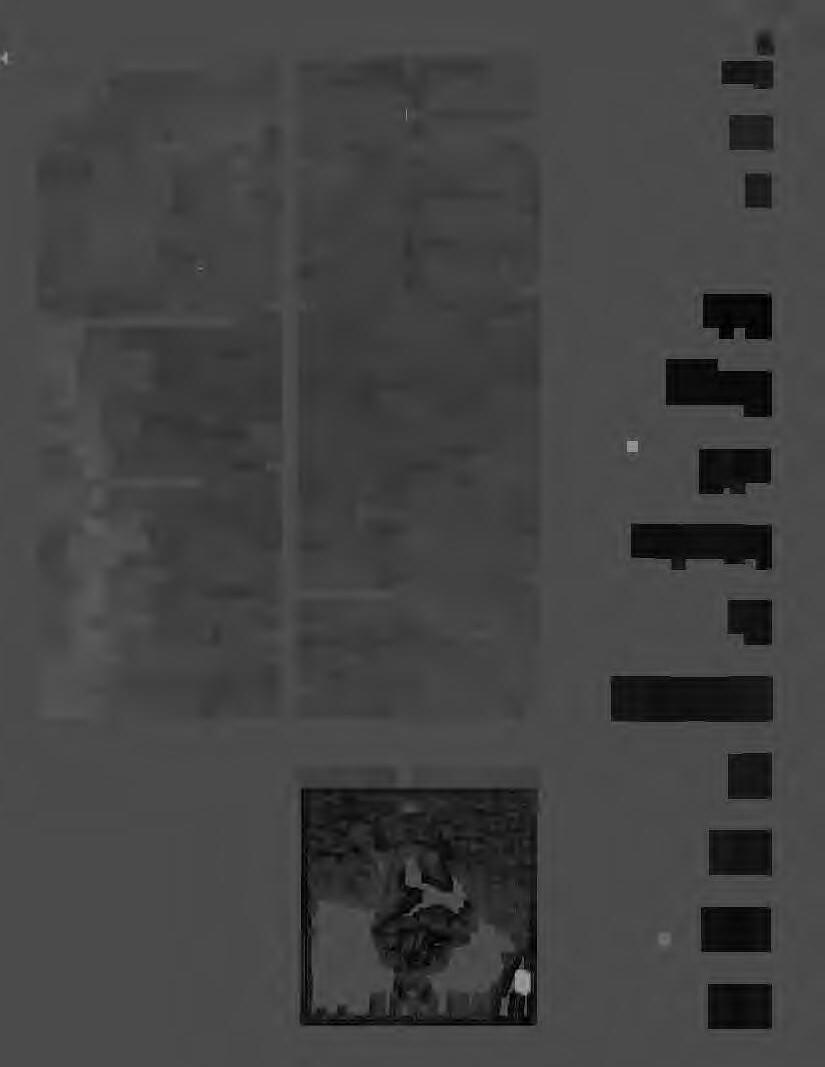 by Gary Green
by Gary Green
If photographerslook to the commercial market as a way of attaining financial security outside their art, separatingart and commerce, and maintainingthe freedom to express ideas in their own art with utmost purity and integrity, the question arises: Can commercial work, ironically, be the ticket to artisticfreedom?
Making photographsto the specifications of an art directoror a client can be a lessthan-pleasantexperience.More often than not a client is askingfor a more accessibleread watered down--version of a photographer's personal work. This raises many questions. Is it sellingout to recreate, in a facile way, work that was made strictly as fine art? Should an artist!photographer choose to do only commercialwork that is completelyseparatefrom his/her art? Conversely, can work done for hire transcend its boundaries and take on the historical and aestheticimportanceof fine art? More important, does doingcommercialwork influence an artist's personalwork and create a desire, even subconsciously,to make fine art that is in some way easy and appealing?
Originallyfrom Oak Ridge, Tennessee, George Holz picked up his first camera, an Instamatic, when he was about elevenyears old. He claims that in his family becoming a photographerwas quite natural-his uncle was a photographerin the Navy, his grandmother was an amateur photographer,and his cousin, Bruce Plotkin, is a successful photographerbased in New York City.
Holz graduated from the Art Center Collegeof Designin Pasadena,California, in 1980 with a B. F.A. in photographyand subsequently began his professionalcareer by shooting record album covers in Los Angeles. But it wasn't until he moved to
Europe, on the adviceof Helmut Newtonwhom he had assistedwhile still a student at the Art Center-that his photographs began to receive widespreadattention.
Setting up shop in Milan, Italy, Holz soon began publishingphotographsin such Europeanmagazinesas Vogue Italia, Lei, and Elle. The United States, also taking notice, featured his photographsin Mademoiselle, Harper's Bazaar, and GQ. He was pronounceda new up-and-comerwith a unique independent style by Photo Italiana and named American Photographer's "New Faces" winner in the fashion category.
In 1985, after returning to the United States, Holz openedhis studio in New York City. He went on to shootmajoradvertising campaignsfor Elizabeth Arden, the International Gold Corporation, and DeBeer's. He continues to shoot extensivelyfor f ashion magazinesand has photographedcelebrities in the music and art world for Interview, Fame, and Rolling Stone, among others.
After five yearsof successin the commercial photography world, Holz decided he needed a new, purer way of expressinghis creativity. For the last three years he has been producing a body of work separate from his commercial work-most notably a series of black and white female nudes, some of whichwere publishedin Collectors Photography in 1987. His first one-man show of this recent work will open in March at the Center for Photography in Woodstock, New York. Maintaining his continually growing commercial business, Holz manages to photographfor himself whenever the opportunity, or inspiration, strikes.
4
Portraitof GeorgeHolz, © 1989Gary Green
Ishbelle,1985, silver print, 16x16"

GG: Duane Michals, in trying to define the majordifferencebetweenphotographing for money and photographingfor himself, said, "Throughfashion photographyI don't learn much about the human condition. What I expect to find in art is a point of discussion. It's what touches me, in a very human way, what makes me want to cry, what explains life to me, what makes me feel. " How do you see your own work in those terms? Also, how does it relate to a person who looks at your work?
GH: I feel very frustrated when I don't do my own work. It is a real need. Like someone's maternal instinct. It's like a drug-you do it and then you feel better. You have something locked up inside you, and it comes out in this photograph.
After the time of my father's deathmy father died about three years ago-some people said, "Maybe working with these bones was a way of facing death and mortality." I don't consciously think that, but maybe it was. Like facing death, life, texture, and all these things. Maybe that is an artistic way of working this thing out. It's real hard to explain why you do something. You take a picture and you say, "Well, I took it because I liked it and it's beautiful," and I hate to go in and analyze things because sometimes I don't even know why I do it or why I like a certain picture. I also have to look at the everyday work as not totally lost-not being up there on the altar with this great photograph that's going to make people aware, but it does make people happy and it does make people smile. I just
did a picture for Clairol, and this woman has these bananas on her head, and the text says, "Take the gray out of your hair." It's a funny picture; someone's going to look at that, and it's going to make them laugh. I've succeeded in a small way.
GG: Many fine-art photographersenter the commercialphotographymarket to make a living. You've entered the fine-art world after being successfulat commercialwork. What led you in that direction?
GH: When I went to the Art Center, I wanted to become a documentary photographer, but then I started actually enjoying doing still lifes-playing with light, working with more controlled photographs-and that opened up a whole new spectrum of things that I didn't really know about. It's such a commercially oriented school, a very technical school. After a while all that stuff that they're brainwashing you with there, like commercialism and making money with photography and this and that-it just starts to seep in. Or maybe it even opens up a broader spectrum.
GG: When did you beginthe personalwork you're doing now?
GH: I may have been doing personal work all along but not knowing that I was doing it. A lot of people look at things you do commercially and say, "Wow, that's a really great photograph," and put it in the context of art. That's the big movement now-commercial photography as art and vice versa. I may
5 •
have always gone along and done an image for myself as a photograph, even years and years ago, but as far as just sitting down and taking a picture and saying this is going to be a personal series of work, I'd say· that was about three years ago.
GG: How did this personal body of work come about?
GH: There's a group of photographers whom I went to the Art Center with in California. We're all peers-we're beer-drinking buddies, we go skiing together. We'd get together, and we'd be frustrated because here we were, we were all doing commercial photography and we're all semi-successful and we're making money, but we weren't enjoying photography anymore. We were doing it for clients. So we said, "Why don't we get together in a conscious effort every week." And we just started doing pictures. Everyone would come in every week with a new photograph. We would have to do someth 0 ing that didn't have anything to do with our commercial work-wasn't an outtake of an editorial job or something. It would have to be something that was new and was done for that week. It didn't have to be a series. It could be anything-it could be a drawing, it could be a sculpture, it could be a photograph, it could be a performance piece-it just had to be something new. So we all did that, and slowly but surely people started developing these miniseries. I had always wanted to do nudes, and I had done nudes, but not a conscious series of photographs. At that point I was really interested in animal bones. I don't know why. It was a thing I was into, a fad or whatever, with all this stuff happening with the Southwest. It jus·t happened, and I thought it would be very interesting to photograph these in black and white together with shapes, with nudes.
I had finished a job one day, and I had a model. It was something for Brides Magazine, bridal veils or something, and there was this beautiful model there, And I had this cow skull that had been hanging up in my studio. I pulled it down and I put some makeup on the girl and I just started playing around with it. I didn't want to do a Georgia O'Keeffe or a Stieglitz or a Karsh-type
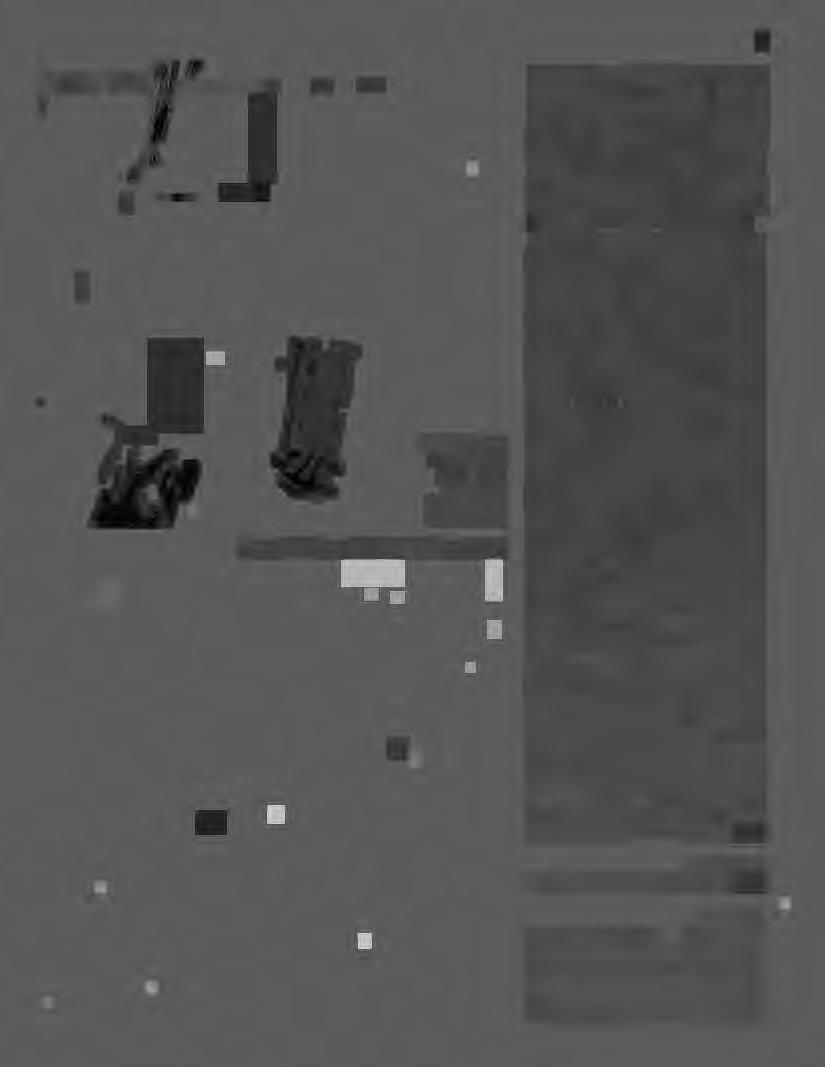
Advertising campaign for Drambuie, 1987-1988 ( tearsheet in color, 12x9½")
6
IshbellewithLonghorn,1985, silver print, 16xl6"
·+{: / '
thing; I just wanted to get this strange juxtaposition.
GG: What do you see as the essential difference between your commercial and fineart photography?
GH: I think they go hand in hand. do have a different frame of mind when I'm working for myself because I don't have a client over me, I don't have a layout, I don't have someone saying, "No, this should be like this." I'm not having to fit it in a magazine page, and I'm just doing something that's purely me, that was my idea. If it fails, if it works, fine. I guess I'm the client, and it's coming purely from my heart and my head.
I think doing the fine-art work fuels the commercial work. When I do approach a commercial photographeven if it's something that's a layout, a white background, a girl smiling, holding up a product or something-I still try to think how I could make that a piece of artwork. People go on and on about this picture I did for the gold campaign [for the International Gold Corporation]. You know, it's a clean beauty photograph. And now it's exalted as this art piece that's on the cover of The Art of Persuasion: A History of Advertising Photography.
I can't always understand why people get so excited about a commercial photograph and say, "This could be a piece of art." Well, of course. You're still creating something. The Sistine Chapel was a commissioned piece of artwork. Some of the greatest art pieces in the world were commercial pieces, so in essence, even though there's an art director behind you and there's layouts and whatever, they're not pushing the button. You're making the final photograph. You may be influenced by other people, and you may have other ideas, but a lot of great art pieces have been collaborations.
GG: Do you find doing commercial workworking with clients, art directors, etcetera-more frustrating now that you've devoted more time to the freedom of your own work?
GH: No, I've always found it frustrating. Most people will hire you because
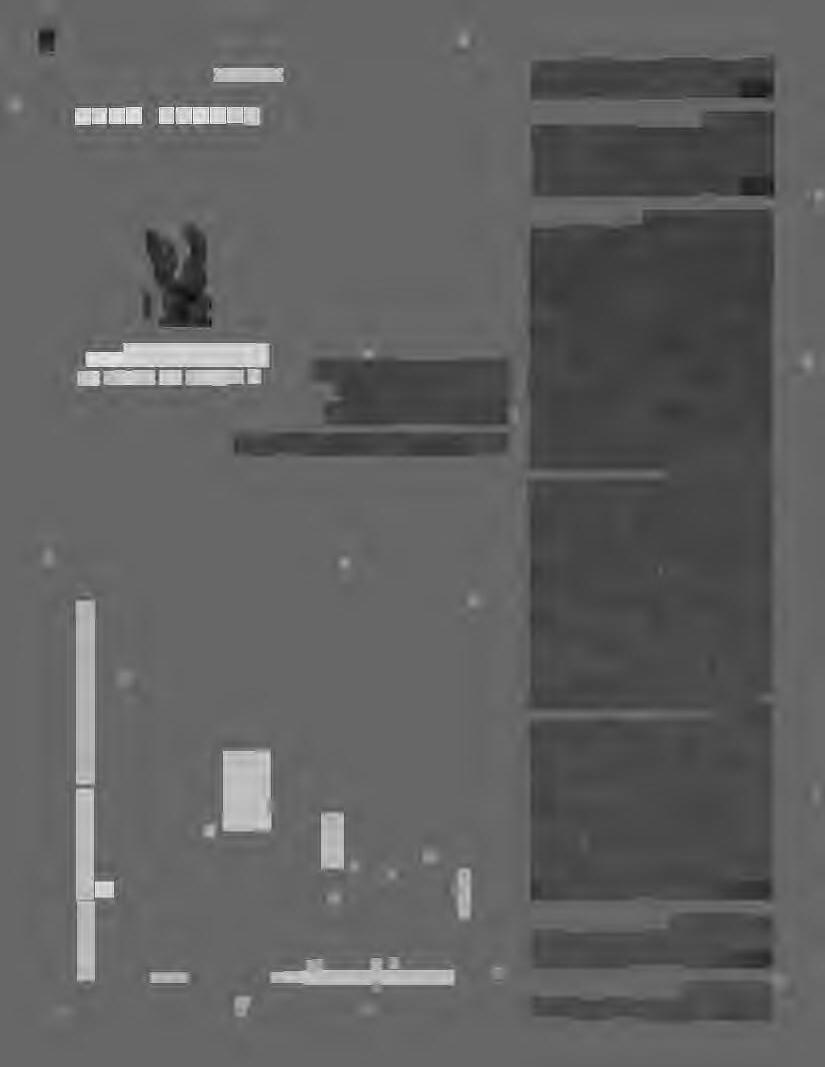
Tony-Woodland Valley, 1988, silver print, 10x8"
• Editorial assignment "Nudes by George Holz" for Follow Me Gentlemen, March/May 1988 (original tearsheet in sepia 12x8¼")
• 7
they like your work, and they respect you; they'll leave you alone. But you do get art directors that are behind your back. They act like you've never taken a photograph without an art director behind your ba~k, because they work with a lot of pec;,le who like to be controlled a lot. I just like to have my space. I don't mind people giving me a little bit of feedback, because I'm doing it for a client, they're paying me a lot of money, and I have to sell a product or an idea. But when they sit behind me and they try to tell me, "I think you should move this light this way," or whatever, I just turn around and say, "Hey, do you want to take the picture?" They have to realize that I do a lot of work on my own, and that most of the pictures they admire are editorial pictures, which do have a lot more freedom, and that those are pictures that I've created. There hasn't been that much input from anyone else. And if they want that, and that's why they came to me, they should just back off and let me do what I want. But usually I get along very well with people; I don't get in big fights. I'll talk very calmly, and I'll do it their way, and ninety per cent of the time they'll end up going with my way anyway.
If I go for a long period of time without doing a commercial assignment, it is kind of weird to have someone in there on top of me. But there are a lot of art directors that I really like working with. I like their input because it's not so much their ideas but their respect for you. You feel that mutual respect, and you want to do better work. There's one art director in particular, John Jay, with Bloomingdale's. He's a very creative person, and he hires you for what you do. You just feel such respect for the guy, you want to do a great job. There are very few art directors like that.
GG: Often photographerswill be asked to make a photographfor an ad or an album cover that is in the same vein as theirfine art. Are you comfortablewith that kind of work, or do you see it as a sellout?
GH: Since I've been doing the fine-art work, people have seen it and wanted me to do a fashion story. And I'm flattered. I guess it goes back to that thing of respect again. Recently someone had seen a picture I did that was part of the

'-"~~,
NicolewithTurtleShell, 1986, silver print, 20xl 6"
Editorial assignment "Zipping Ahead" for Harper'sBazaar, August 1986 (original tearsheet in color, 1lx9")
8
series with animal bones. They wanted to do an album cover of a black girl - with a large bone. They left it up to me, and I approached it as if no one were there-no one bothered me. I just had this girl, I had this huge horse's head, and I explained to them that it's a difficult thing to do-it's awkward to have this nude girl lying down with this bone, trying not to make it look silly or pornographic and trying to get that fine line where it really does come off as a beautiful photograph. They understood that. They stayed in the other room, and I did the shot. But a lot of times people will come, and they'll say, "We really want to do this, we're all excited, this is going to be great," and they'll see the Polaroid and they'll say, "God, this is going to be too strong; we won't be able to sell this. Can't we water it down just a little bit?" That's what bothers me: when people don't have the backbone to stand behind a picture and fight.
GG: How woul.dyou feel about sellinga photograph-one that's part of your body of fine-art work-to a clientfor commercial use?
GH: That wouldn't bother me. I don't put the work on an altar. I'd like to have a lot to say about the layout or how it's going to be used; I wouldn't want them to crop it. But if they're going to crop it and put type all over it, no, I wouldn't let them do that. In fact, I did a poster of one of my [fine-art] images. It wasn't really a promo piece-it didn't have my phone number on it. I just printed "Holz" on the bottom of it because I wanted to haue an image that would go out and hav my name on it. It was just a way to gr, the work out for more people to see. I think if it's tastefully presented, it's not a sellout.
GG: You were an assistant to Helmut Newton. How woul.dyou distinguishbetween what he does for a livingand the art he does for himself?
GH: I think his work goes hand in hand. A lot of the work that was in Paris Vogue ten years ago will end up in one of his books and in a gallery. He's very unpretentious. He does pictures exactly the way he wants to do them, and that's what they use-most of the time-be-
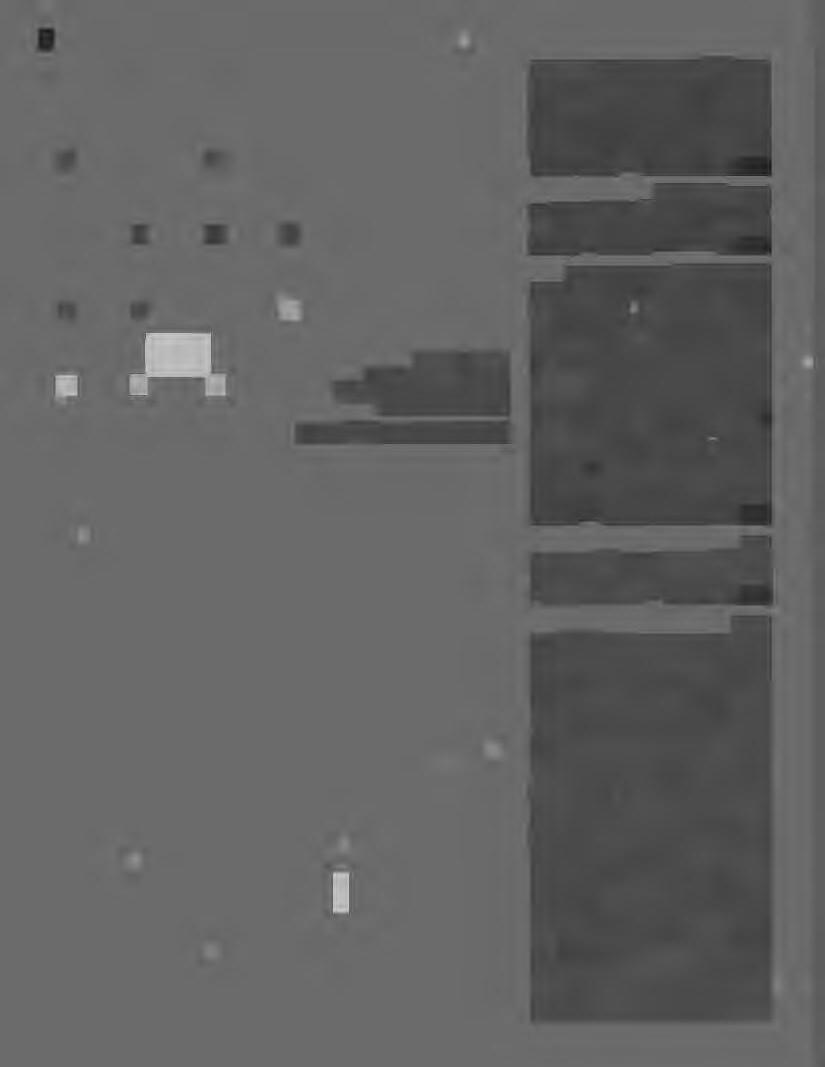
Untitled, 1987, silver print, 20x16" Advertising campaign for International Gold Corp., Inc., 1985 ( tearsheet in color, 1lx8½")
D ... G 0 LD 9
cause they know his work before they come to him. They're paying him a lot of money; they want a Helmut Newton. But he's won that respect. He's one of the few people who, has.
GG: What about somebody like Richard Avedon, who seems to keep a certain distance between his truly commercial work and his fine art?
GH: I like Avedon. I really like the book he did [on the West]. I love his early photographs, his early portraits. Most recently, his commercial work bores me-his Revlon ads or his covers of GQ or Vogue. They're boring. I realize he may have someone standing over him, saying "You have to photograph this girl real clean on a white background" or whatever, but hell, he's Richard Avedon. He could say, "I don't want to do it." He used to be so innovative for his time, and his photographs were amazing; now he's just doing it for the money. But then on the other side he has his fine-art work, like his black and white portraits. I just think in a way he's sold out commercially. Unless it's just the passage of time that makes his older work look more interesting. See, I don't know if back in the forties these beautiful location shots that Avedon used to do, that are now hanging in the Marlboro Gallery, were just par for the course. Maybe there still was that definition between the two types of work. But we look at it now, and here's this great piece of work. Only time will tell that.
GG: Are there any inherent problems in separatingart and commerce?
GH: No, there aren't. That's just my opinion. [Avedon] obviously has made the decision to do beautiful, clean, technically perfect work-if there is such a thing-that is saleable and what the client wants, but at the same time, he does his own work. I guess maybe I combine the two a little bit more. I don't know which way is right or wrong.
GG: Do you think that after ten or twenty years of doing commercialwork you might become cynical?
GH: There's catalogs, where I put up the white background and I pump it
out, because they want nothing more than that. But I try to really knock myself out and do something that's beautiful. Even if I get one image out of that catalog that's a little bit off the wall, or more interesting, then in some way I've succeeded. I just can't sell out. Maybe in ten years I'll be banging those things out too. Who knows? Maybe it's the youth and being still excited about it all. I can easily see that wearing off. It happens to musicians; it happens to artists.
Avedon doesn't really have to prove himself anymore. Neither does Irving Penn. They've made their mark on photographic history. It just seems to me that they'd want to push a little bit more, but who am I to say? I'm embarrassed if I have a bad editorial. I have something out in this month's Mademoisellewhich is a total embarrassment, and people still see that it has my name on it. I'm always thinking about how people judge my photographs, whether it's a picture in a gallery or in a magazine.
GG: Do you have a problem, after dealing with women on your own terms, having to photographwomen on the client's terms? Do you think sexism is prevalent in advertising or editorialphotography?
GH: I think it's evened out in the last couple of years. You see with the Calvin Klein ads and things, men are portrayed as sex objects as well. Like the pictures Bruce Weber did. He really brought the man into being the sex object with his billboards in Times Square. And face it: Sex sells. Sex and puppies and babies. That's what sells. Whether it's good or it's bad, I don't know. I like looking at sexy women, and if there are people who don't, that's their opinion. There are people who like looking at sexy men. As long as it's even and everything's out there for everybody, then I think it's okay. As long as there's not something that's particularly exploiting someone. You can't please everybody all the time. I think it's good to stir up coals. I like controversy.
The exciting thing about this business is that with one image we're able to cause a lot of commotion. Especially in advertising. Shock gets people to take notice and buy products. Good or bad, I don't know.
GG: Accepting the premise that an artist should, to some extent, be socially consciousand responsible,can you as an artist, as well as a commercial photographer, maintain that conscience in a sociallyunconsciousbusinesssuch as advertising?Do you turn down certain work or seek out certain work?
GH: I should, but I don't. But I would like to start doing it-turning certain work down. There was a long time where I was doing the gold campaigns and I never really correlated that with everything that was happening in South Africa. I would really think twice about doing that again. You could get carried away. You shoot an ad for liquor, and somebody goes out and drives drunk and kills some kids, or you shoot ads for cigarettes, or whatever. I think if people are dumb enough to want to go out and smoke cigarettes, that's their problem. I've never been approached to shoot a cigarette campaign, so I've never had to cross that bridge.
I would like to do more pictures like the kind you see on the subway for the United Way or AIDS. I've never asked to do them, but I would gladly do those things and do them for free.
I'm a devout environmentalist. [Recently, George has found a second residence in Upstate New York.] I love fishing and hunting and all that stuff, and I want to protect the environment. People don't come to me for that kind of work. I would love to help out those causes, but I've never been asked.
One reason that I do my personal work is because I feel a lot of the commercial work I do is very empty and very materialistic. I always did feel that with the knowledge I have in photography, I could be using it to better serve the human race.

GARYGREEN has photographed for clients as well as for himself for the past twelve years. His work has been exhibited in New York City at Foto and 303 Gallery and most recently at the Watermark/Cargo Gallery in Kingston, NY. Green, in collaboration with his wife, Pat Sims, is publisher and editor of Satori, a quarterly journal of literature and art. He currently lives in Tivoli, New York.
10
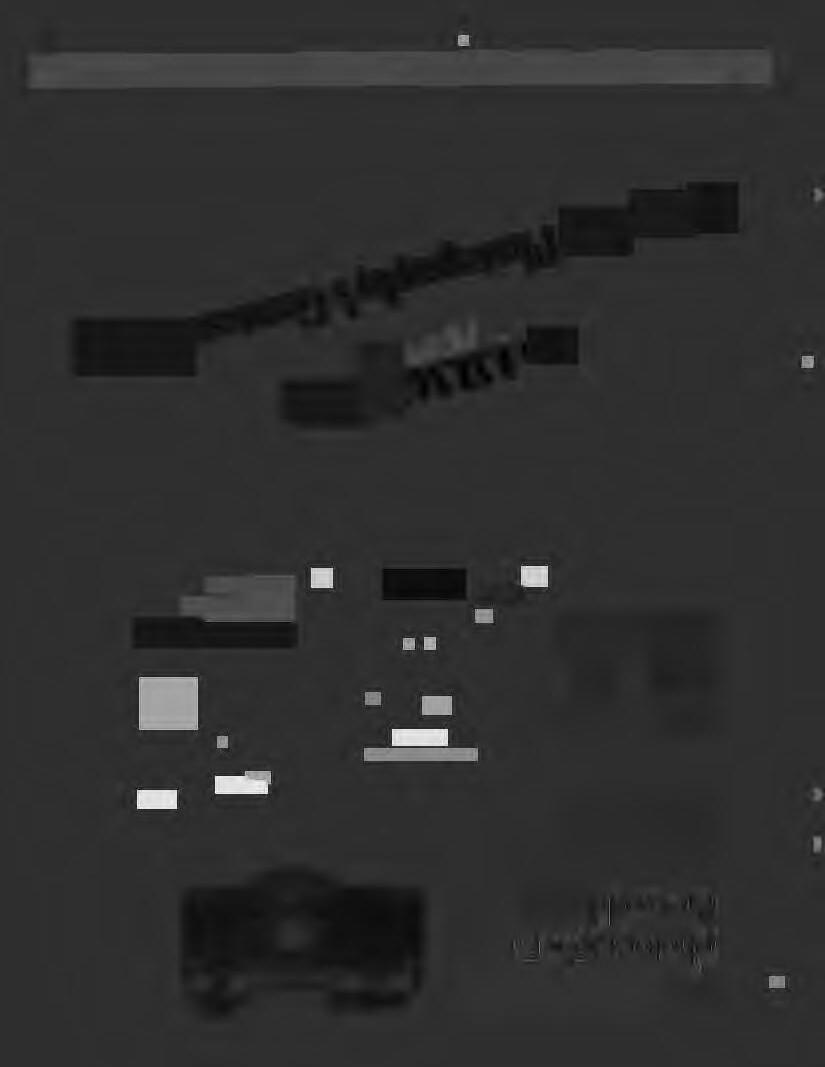
Fordiscriminating photographers theworldover, discriminating SLRsfrom Olympus.
.,.,
OM-4Tand OM-77AF AutoFocus. . /.,.,,.,..,. OLYMPUS" Olympus Corporation Consumer Products Group Crossways Park Woodbury, NY 11797 \\~~ 'f\\tsi,i0UltJU'~ h ' Gteatest\_11\.aies ~e~e Gotvnoto~a\' s •• NewYorkCity,Chicago,Atlanta,Los Angeles,Dallas,Barcelona,Bogota,Brussels,BuenosAires, Helsinki,Hong Kong,Jerusalem,Johannesburg,London, Madrid,MexicoCity, Montevideo,Milan, Paris, Porto Allegre,Rio De Janeiro, Rome,Santiago,Sao Paulo,Selangor,Seoul,Singapore,South Melbourne,Stockholm,Tel Aviv,Tokyo,Toronto, Zurich 11 ..
Bornin 1892,RuzzieGreencreatedmemorablecommercialphotographsinthe1930s,40s, and50sforsuchclientsasCadillacMotorcars andthePalmoliveCompany.Trained at theArt StudentsLeaguein NewYorkCityand at its summercampusinWoodstock,NY,Green'sfirst interestswerein drawinganddesign.It was whileworkingasanartdirectorfortheStehle SilkCorporation in 1926thatGreenmetEdward Steichenand collaboratedon a now-famous campaignresultingin photographs of matchsticks,sugarlumps,mothballs,tacks,andother commonobjectsas the basisfor silkdesigns.
In 1932,aftera short-livedcareeras art directorforHarper'sBazaar,Green'scareeras a commercialphotographer"tookoff."By1933, hewasa pioneerinthenewindustryofcolor photography.Greenwasamonga smallgroup of innovatorsusingthe laboriousnewcolor Carbroprintmakingprocess.Otherpioneers includedPaulOuterbridgeandNickolasMuray, withwhomGreenshareda studio.Magazine pagesofHarper'sBazaar,Ladies'HomeJournal, and McCal/sshowedGreen'sphotographsfor accountssuchas Camel,Chesterfield,Lucky Strike,Pepsodent,and Modess.
Green,whodiedin 1956,isbeing"rediscovered"inthe1980s.Hisworkrecentlycameto noticein TheArt of Persuasion: A Historyof AdvertisingPhotography, a bookpublishedby HarryN.Abramsin conjunctionwithan exhibition at the InternationalCenterof Photography in NewYorkCity.
Thisspring,TheCenterfor Photography at Woodstockisdelighted topresentthefirstsolo showofGreen'svintagecolorCarbroprints,as wellastearsheetsfrommagazinesofhistime. Workis loanedby the photographer'sfamily; MartinCarey, a photographydealerwhoruns PicturesGalleryin Woodstock, is a consultant

RUZZIEGREEN
PhotographsfromtheI930s,40s,and50s to the show.
Portraitof Greenandhisstudioassistant, c. 1950s,photographerunknown
12

Redhookmagazine,murdermysteryillustrations, c. 1940s,silverprints,eachapproximately9x13"
13 ...

PersonalProductsCorp.(Modess),circa1950s(originalcolorCarbroprints, I6x12½")
14
RUZZIEGREEN

• f 111srrtf!ELD -
lk<1S'~fr ~'o t\0 o<o' < '\ •' e ' "'",o t) lt -(~ ., ," "' ,._' <,, _,< ' e7 P-Q-oo <" ,... \\ ,6 .• ;!J C, --t-· G ,...-:. tb ,,,'c,~
pleasure
cigarette
ever smoked A HAPPY COMBINATION OF THE WORLD'S BEST TOBACCOS Chesterfieldcigaretteadcampaign,1939-42,Liggett & MyersTobaccoCo.,fromTheSaturdayEveningPost(originaltearsheetsin color, I3½xlO½") "' IS
• • - always Milder and /Jeller-7{1sti11g alwaysCooler-Smo/..•i11l(1h:it'~ ""'II mal.c, ChN,•rli..,Jd 1h,• -.ic~d) ,nu,l.c of"""" ,uw,1.n, ~•Ct) d.t). , u cai, count "" Chc,1Hfkld, t" '"" !'"'· d:11 m •"d d.t) 1, 111.,•b•t p/,a,11r, 1/ru ,- r..-r l,11J /1,'fw, ~, ,naJ..,· )our nc:,1 IY.ICI.O>e'1,·rfi,.JJ anJ ,r,rithtc.1mh111:111<111ofth,· \\i,rkl'• fin,·,t ti.(u..Clc tr,h:itttK"'" to '" ""''"' ,;,,'"",II>••"'"''"•"'"""
(hesterfields give me more
than any
I
THESTRUGGLE
AnInterviewwithLilo Raymond by
CourtiaJayWorth

Lila Raymond, who, in her sixties, is white-hairedand dressesin soft, shimmeringgrays, often appearsto be one of her silver print photographscome to life off a gallery wall. Her deep voice, European accent, her seductiveglancesadd a romantic charm to her commandingpersonality.
Gleaning technicalinformationfrom friends and assistants, Lila is essentiallyself-taught.Havingstudiedwith David Vestal and worked with Charlie Pratt refined her technicalskills. More difficult is to identify the source of her aesthetic. It is unique and is emulated, often unknowingly, sometimes consciously, by less experienced and younger photographers. When one thinks of Lila Raymond, imagescome to mind of an unmade bed, stackedpillowson a bedroombureau, white shopping bags draped in sunlight in the comer of a white room, and solitary flowers in simple vases. These slightly grainy, smooth gradationsof delicacy, with light playing on white, define feelings as much as does the subject she photographs.
Lila did not intend to be a professionalphotographer.Her pleasure was to make photographsand live and function as an artist. Commercialphotographycame almost by accident but has become an important aspect of her life. Perpetually in motion, she moves between her loft of decadeson Manhattan's 14th Street and her three-storymansard-roofedVictorian with skylightstudioand gloriousperennialgardenin Eddyville, New York. As one might imagine, the interiors of both domicilesare a crisp white, and althoughlived in and unpretentious, each comer of each room reflects, undeniably, the ever-presentromantic sensibilityof Lila's photographs.
ART,COMMERCIALART,ANDCOMMERCE:
16
Book Jacket for Spa Food, Clarkson N. Potter, Inc., 1985, original in color, 11 ¼x9"
Lilowith Rajah, © 1986 Will Faller, silver print
I 1
EnamelPitcher,1988, silver print, 8½x13"
CW: How actually did you strike out on your own? What was your first gallery break?
LR: I was very lucky. I never went out for anything. Cusie Pfeifer wrote to me after having seen a picture in Gail Buckland and Cecil Beaton's book, The MagicImage. I had shown some photographs at the Floating Foundation of Photography, Maggie Sherwood's gallery, in 1971, Cusie included me in a group show at Schoelkopf in 1976, and Scott Elliot, of Helios Gallery, published a limited edition portfolio. In 1977 I had a one-person show at Pfeifer Gallery which got a good review in The New York Times, and my reputation began to build.
CW: Commercially, how did it all come together?
LR: I started off with Country Inns of America, a series of hardcover volumes published by Knapp Press, and ArchitecturalDigest. I photographed interiors and exteriors of inns all across the country during 1978 and 1979. They were the first of their kind with photographs, and because they were successful, my photographs had a lot of visibility. Jo Ann Barwick, editor of House Beautiful, bought some pictures of several inns I had photographed. She took me out to lunch and said, "We like the pictures, but we don't do that kind of lighting. If you ever want to work for us, learn something about lighting, and I'll give you a job."
Posters were important, especially in the last two or

three years, along with notecards and postcards of my personal work. It all works together. And in the meantime I began to get published in House Beautiful, Self, Brides, Woman's Day, and Victoria. When you sit in New York long enough, things come to you in a very nice way.
CW: Were you apprehensiveentering this arena?
LR: At an advanced age, I think, one is calmer about things than one is as a young person. You miss some, and you gain some. Somehow it's not going to ruin your total career if a client doesn't like one job. After a certain period of time you have established a particular working method, and mostly, it's fairly successful. I don't mean to be arrogant or anything, but I really think there is a difference between an older person and a younger person. Also in my personal photography, after an abortive attempt in my early twenties, I restarted again in my late thirties. I was grown up, so that I didn't have to go through a lot of things that young students go through. I knew who I was, or had an inkling. This is also true with the commercial work.
I enjoy the editorial work very much. The people are lovely that I work with. In what I do, interiors and still lifes, I mostly work with women. I've made some good friends. It ends up that you socialize with a lot of people you work with. It's amazing how this goes on.
CW: Do you think beinga woman affects your career?Does
I J ~I '
17 •

it make you especiallypopular?
LR: I don't think it makes much difference. You mean being European, or older? I hope not! What I do should really matter.
CW: Haven't severalof your closestfriends and collaborators on projects resultedfrom editorialand advertisingcontacts?
LR: I've worked with Alicia Beldegrieves, who is now the Creative Director for Brides, for eight or nine years. I would like to do a book with her, really. It's zany to work with her; she's constantly doing unexpected, whimsical things. The other day we needed a centerpiece for a table, and in a flash she grabbed a man's brown felt hat, plunked it upside down, and piled oranges in it!
Deborah Beaulieu and I have traveled a lot together. She started out as the home furnishings editor for Redhook and now is senior editor at Victoria. We've certainly laughed through some impossible situations together as we've trekked across the country.
CW: Well, then, what is more excitingfor you, the commercial jobs or doing your personal work?
LR: The personal work, of course! There's no question! Would I do the commercial work if I had a private income? I would probably do just very special things. I really enjoy some of it enormously, especially working with people. It's otherwise very lonesome.
Orie has to separate editorial from advertising. Editorial, mainly, is totally set up for you, and all you have to do really is find a camera angle. You work with people, so there's a shared responsibility. In advertising, somehow, you've got to get the whole package together; it's harassing, to say the least.
CW: How much of your time these days are you spending on commercialwork?
LR: Sorry you asked that question! Oh, probably eighty to ninety per cent. It's not that I work that much, but what goes on with commercial work is that the before and after is very time-consuming. One must go and buy film, test film, call people, and get them together-assistants, stylists, that sort of thing. Afterward, you agonize and you edit and worry if they will like it. A lot of thought and emotion and time is spent on the peripheral things. I'm perfectly happy working. As a matter of fact, that's my favorite thing to do. I mean, I don't even mind if I have to get up at some ungodly hour to be some place in Connecticut to photograph a house or whatever. The actual process I really enjoy. This before and after gets very boring and mind-blunting.
CW: Isn't it exciting that editorsand art directorsare seeking out artists like you?
LR: Advertising has always been inspired by artists. Ads looked like Matisse or Picasso. In photography, it is trendy now. What is going on is you have knowledgeable people out of art schools and fine colleges, with very sensitive tastes. It's a very different world than you had twenty years ago with old-fashioned art directors in conservative suits declaring absolute truths! It's more creative now; there's a more sophisticated aesthetic.
CW: Aren't they hiring you because they like your seeing, your personal point of view?
LR: People pay you for your eyes. Taste is something you can acquire. When you have sensitive eyes, anybody can be a photographer. They periodically rediscover black and white, and right now, they are into a period where black and white is new! I haven't changed since I started photography twenty-five years ago. My hair has changed to gray, but my work has not. I'm not au courant, but they like me anyway. I had two jobs recently to do fashion. I kept saying, oh, no, I am not a fashion photographer; I have never done fashion. They kept saying, oh, yes, you will do wonderfully; we are willing if you are. I will try anything once. It was black and white, but I did use some color, just because it was very pretty. It was a totally new thing for me, and I enjoyed it.
CW: You were featured in the Winter 1988-89 issue of Brides magazine, photographingfragrancesalong with Joyce Tenneson and Sheila Metzner. That was a fascinating idea. How did it work out?
LR: I suddenly felt a little at a loss. I'm not used to functioning as an independent artist for a magazine, and surprisingly, I was called upon to do just that. Partially, something revolted in me. My house was going to be used. After all, I bought this house because I wanted a place to photograph my own work.
I resent the fact that when I do work for myself, clients want me to do the same thing for them. It is repeating something and also bastardizing something. The commercial work, where there is a layout, I have no problem with. This assignment was very commercial, with a guise of being personal. I don't know how successful I was. I only took sort of a couple of looks at it when it was published. Basically, I really liked the two other women's pictures much better, if you really want to know.
CW: For the last couple of years you've been doing photographsfor advertising. How did that come about?
LR: It is just very recent and had to do with having a rep, Colleen McKay. We found each other at the Maine Photographic Workshop Congress in August of 1987, and it's been a happy relationship so far. It's very good to have somebody else send out a card, have her call instead of me. She knows where to take the work and who to see. And it's very hard to talk about money, and
18

•
PaperCup, 1987, silver print, lO¼xlO¼"
19
Catalog for Bullock's Department Store, 1988, original in color, llxll"
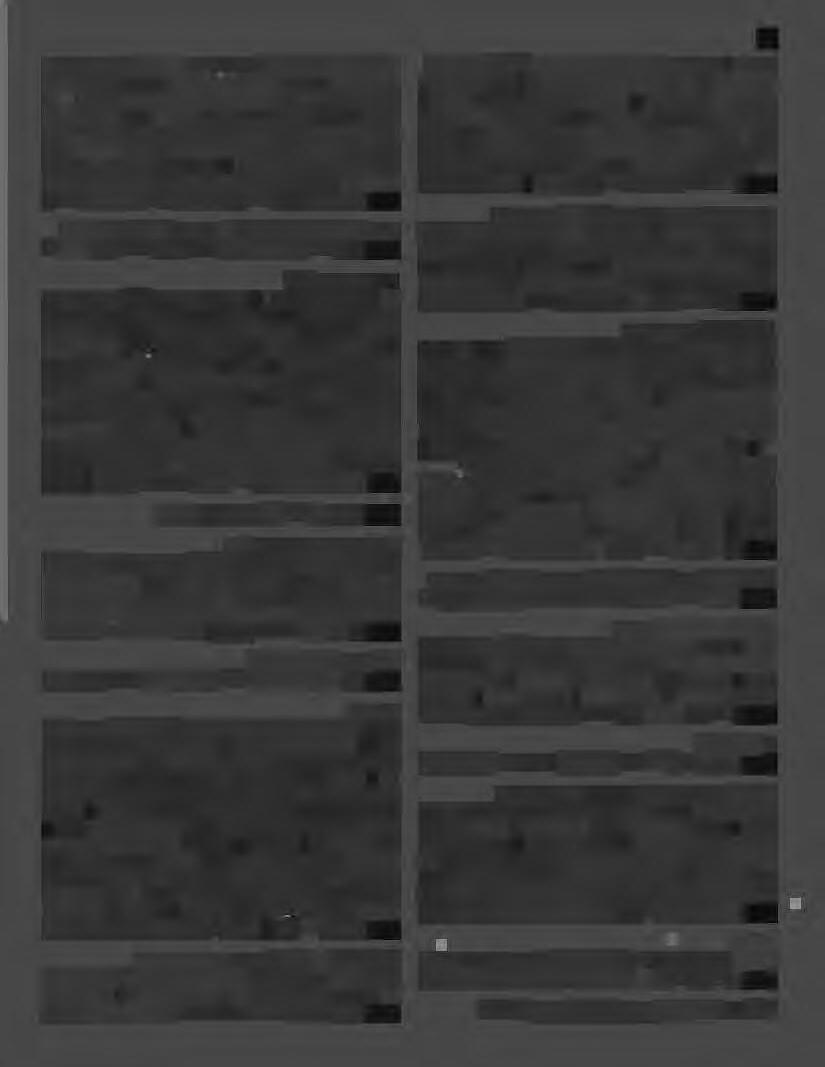
reps are very good about talking about money.
CW: You did an ad of a Carrierair conditionerrecentlyfor Ogilvy & Mather. Were you surprisedto be asked to do that job?
LR: They wanted a kind of special feeling about their air conditioner, with a white scarf floating above it as if the blower was holding the scarf up. This wasn't at all foreign to me, and it looks very much like my kind of picture. That pleased me no end, and I was paid very well. I had a big crew: two assistants, a stylist, and a construction man to do a stucco wall. Fans had to be rented, and I catered a lunch for the client.
CW: Sounds as if you wereproducingan event or coordinating a production.
LR: I saw the layout and never thought the final picture would be close. It looks exactly like the layout! I thought that I would balk to work to a layout. In commercial photography it is a group effort. This is one of the reasons why I find it interesting, because when you do your own work, you're always alone.
CW: Does your artistic temperament get aroused when so many peoplewith many differentideasand goalsget involved?
LR: In a lot of ways I don't have enough ego, actually, when I work. I don't throw my weight around, or I don't think I do anyway. Look, it's a compromise. I'm perfectly happy to do what somebody wants me to do as long as it's not totally against the grain somehow. Basically, when you get paid, you want to please another person. I can suspend my personal photographic sense when I photograph commercially, because it's very different. You're selling something or showing something to somebody-a house, an object that is for sale. When I do my own, I'm not selling anything. It's showing something to people, but certainly not selling anything. Some dumb pitcher sitting in the sunlight someplace. I can't make any money out of that!
CW: In a great deal of editorialand most advertisingphotographyit appearsthe two aesthetics,personaland commercial, are coming closer together. I am certain I could curate an exhibitionof Lila Raymondphotographsthat would be well-received in the fine art community by pulling only from your commercialwork. How do you feel about that?
LR: I pay no attention to that work! I have thousands of slides and pictures, and every once in a while I pull them out for stock. They are pretty pictures, but they don't have soul. It's something to do with color and black and white. Black and white is really my great love. Color is sort of incidental. I love color and am aware of it. I certainly use it. If something is jarring, I am very fast to see it. I cannot stand it if the color is wrong anyplace.
CW: The imageon your most recent self-promotionmailing of the bathtub has plenty of soul. It appearsto have passion and a style not dissimilar,for example, to your well-known photographof pillows stacked on a bureau.
LR: Maybe so, but I know a lot about this bathtub. A stylist set it up. It was in a studio. We took the picture, but we had fourteen different props on it. A floor was created for it, a particular chair had to be found, different towels, what have you. At one point, there was just this one towel, so I shot it. It was never used by the client, because it has nothing to do with merchandising. Had I stumbled upon that particular bathtub as such, I would have wanted to take it, but it has a commercial thing to it. I can't even explain it. It's not like my old white bathtub with the funny feet upstairs. It is unacceptable to me as a personal piece. It doesn't have a human presence somehow. It doesn't have my presence after all, does it?
CW: Do you have to put your personalfine art on hold when you work commercially?
LR: Well, it's not on hold. I just got seventy pictures together for my monograph, RevealingLight, that's going to be published this spring by Little, Brown. It's personal pictures with an introduction by Mark Strand. There will be a show at Pfeifer Gallery in New York in April when the book comes out.
CW: How do you feel about this book?
LR: Apprehensive, if you really want to know. I think black and white photography books need to be enormously well printed to get the feeling across. Little, Brown usually prints very good books. I hope it is successful, whatever success is for a book. It represents my work well. One very nice thing is that John Esten, the designer, and I picked out the pictures together. I'm always known for white pictures. Well, I'm very happy to say there are an equal number of dark pictures. It spans twenty-five years, and some pictures that I always liked but nobody else ever liked, are in there. Who knows what the future of this book will be? It is sort of nice. My first book at an advanced age.
CW: Has your self-confidenceas an artistgrown since you've been successfulcommercially?Does it affect your seeing?
LR: Anything that you do visually is a balancing act. certainly learn things technically. My personal work has not particularly changed. I think one has to be careful not to get one's eyes "commercialized," to be always selling something or making something as attractive as possible. I think in my own work I always like things being slightly awry. Not picture-perfect, because life isn't, is it? I hope I never lose that; I don't think I will. One's personal photography comes out of one's life, and life is
20

...; .5 .... 0.. <1) 2 "' .....
so fast now. You zoom around a lot. A kind of more leisurely European way of living, which I would love to live, I see no hope for in the near future. Not Lotus Land, but a kind of unlimited time in a day. The moment you are a workjng photographer, there is all this trivia you have to take care of.
CW: If you could orchestratean ideal scenario for your future, how do you see the balancebetween your commercial and personalwork five years from now?
LR: Is there such a thing as ideal? More .balanced toward doing my personal work. I will never make enough money so I can retire. It's not like working for fifty years for I.B.M., where you get retirement pay. When you freelance, this is not possible, so I will always work, which is fine. But it's important to take time, to get one's head together, to at least think about what to do next. I think I'm over trying to apply for grants. It would be nice, but I don't feel quite right about it. I think the moment you make a living, you should let other people apply for these things.
Maybe, after all, the thing is to give yourself a grant and take off just enough time so people don't think you have disappeared altogether. A couple of months here and there and just go away. I'm beginning to think photographers have to lock themselves up in their studios, or they have to travel.
It's my own doing that I don't take the time. I think it is a female thing of not thinking enough of oneself. There is something so deliberate about taking time for myself. And quite frankly, I might be immobilizedby the freedom. It might be better if, as I hop around from the city to the country, to wherever I'm going, that I do my personal work whenever I can rather than to actually take separate time. But it's a good thought! I just bought a book, right here on my desk, Guide to the Caribbean!
CW: In thinking about what might be next, do you see in your personalwork that you will work with color?
LR: I really don't know. I did a cookbook, Spa Food, for Clarkson Potter, and every once in a while I look up something, see a picture, and I think, oh! that's really not bad at all. So I have a good time thinking about it. It is an entirely different thing. I would need a lot of time. I would like to do some personal color. I've done flowers from the garden already. But again, you have to have the time to see the sun move from one corner of the room to the other. . . .
COURTIAJAYWORTH has written on corporate collecting for the Center Quarterly, co-authored On CollectingPhotographyfor the Association oflnternational Photography Art Dealers, did a profile of Evelyn Hofer for Modern Photography,wrote book reviews for Photograph Magazine, and authored The West Coast Bed & Breakfast Guide for Prentice Hall.
·I· T WhereArt MeetsScience
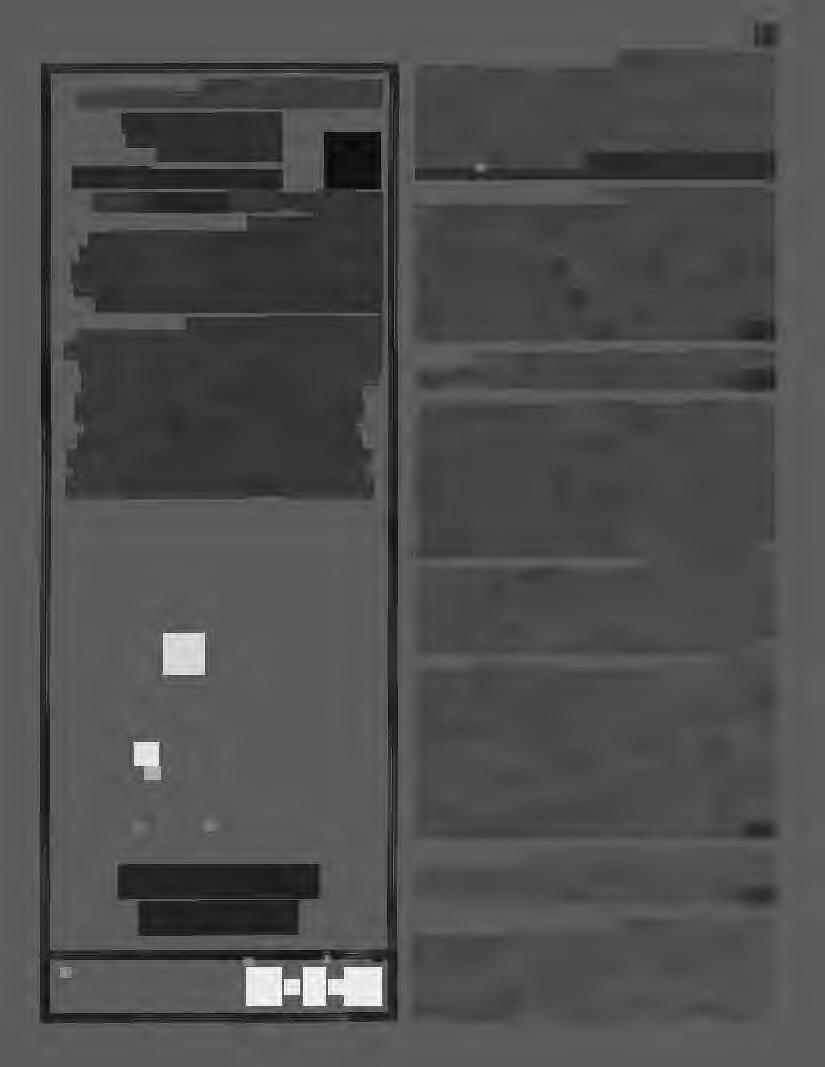
"Photography is an art driven by vision and technique. As photographers, to make our visions come to life we must rely on technology. Even our clearest visions are dimmed if we can't master the techniques that are photography. That's what RIT is all abouthelping you capture your artistic vision by helping you explore traditional and emerging techniques."
-Kathy Collins, RIT Photography Professor, whose teaching and work bridge the gap between fine art and applied photography. An acclaimed fine art and documentary photographer, her work has been exhibited nationally, and is included in the collections of numerous historical, photography, and art museums.
Attend RIT's Photography Workshop Series. We'll help you expand your outlet for expression with color techniques, special effects, studio lighting, on-location and portrait photography, the zone system, and other techniques. From traditional to state-of-the-art, our workshops cover it all.
Call today for our catalog: 716/475-2758.Or write:
Rochester Institute of Technology
T&E Seminar Center
One Lomb Memorial Drive
Rochester, New York 14623
22 R
Sponsored by Eastman Kodak Company Professional Photography Division
Still
video photograph by Douglas Ford Rea
ARTISTS'VIDEOS / CAROLEANNKLONARIDES
Thereseemsto be a trendin Americantelevisiontowardchangingeverythingintoa dramaticpresentation,eventhe reality that it's basedon.Theparadoxis that whatis createdfor televisionhas becomemorerealthan the actual.It is television real-a realitymoreentertainingand excitingat timesevento thosewhoactuallyparticipated in the realevent.Todaythese eventsare packagedand soldas eithera featuremovie-of-the-week or as a mini-series,whilesome"real"eventsare even createdwiththisgoalin mind.
TELEVISION:FORREALfocuseson the ideaof slowingdownthe speed-of-lightrealitiesof TVto re-evaluatetelevision'ssense of event,place,andtimethat is continuallysubstantiatedbytheentertainmentqualityoftheeveningnewsandthecontemporary philosophies of the commercial.Tapesincludedin this essayare self-createdtelevisionrealitiesthat bringthe artist'sown experienceand/orinterpretation of the mediuminto play.Themajorityof workis originalmaterialcreatedby usingand reworkingexistingtechnologies,whetherlow-techand createdfor wideuseor high-techand lessaccessible.Whatis common to all is a notionof "difference"-froman interestin subvertingthe messageof themediaindustryto developing an awareness of whattelevisiondelivers.

CAROLEANNKLONARIDES is a videoproducerand curatorwholivesin Brooklyn,NewYork.Hercurrentvideowork,TheNewUrbanlandscape(withMichael., Owen),is an eleven-partseriesprofilingnineartists,includingVitoAcconciand DennisAdams.PreviouslyshecreatedvideopiecesfeaturingR.M.Fischer,Laurie Simmons,RichardPrince,andCindySherman.Klonarides'workshavebeenpresentedin NewYorkCityat the InternationalCenterof Photographyandthe Museum of ModernArt,and in Geneva,Switzerland, at HalleSud.
= ==-·-· --- ------ --m.i:: ___._f . -• ... ·--·~~===1:----------------- -~- - -~--------.. - --------- --=~ ft =~ -,·;:.:::;3:=~ s: 1: ,a t::::::::= t::::::::=------ --------t -• ------ - -- ---r.E~~~~~ .. -= ---· ------ -- ----------:1;;;;::--=:1=-==-= EF =g I• - • • - • • - • ==:==!--= ,.; = a - _gf =-7 i =-1.: ~f~~-:
ANTFARM,TRUTHCOBRANDAMILLER SARAHTUFT MICA-TV(CAROLEANN with DOUGHALL l.A.NICKELDON'TMAKEMEUP KLONARIDES / THEETERNALFRAME MICHAELOWEN) SHELLYSILVER JOHNTORREANOMEETTHEPEOPLEARTWORLDWIZARD DARABIRNBAUM BARBARAALLEN/ DAMNAT/ONOFFAUST:MICHAELSMITH CAROLCLEMENTS TOMRUBNITZ / CHARMINGLANDSCAPE"MIKE"DOLLDAYAFTERNOONANNMAGNUSON MADEFORTV I I MITCHELLSYROP NORALIGORANO / DIIOLV BRUCEYONEMOTO / MARSHALLREESE WATCHITTHINKIT ILENESEGALOVE NORMANYONEMOTO THETOUCHINSOMNIACSLULLABYMYPUBERTYVAULT
23
Howdoestelevisionaffectourcollective memory?ANTFARM, a groupof artistsworkingtogetherto demystify themedia,managed to insinuatethemselvesintomediahistory.MEDIABURN, an eventstagedby the group,documentsthe symbolicdestructionof a wallof televisionsetswhilebeingcoveredby nationalnews.It wasa successfulattemptto createtheir own mediaimage.ButperhapsmoreprovocativewasANTFARM'scollaborationwith T. R. UTHCO in 1976,whentheydid a re-enactmentinDallas,Texas,ofPresidentKennedy'sassassinationbasedon the nowfamiliarhomemoviefootage of the event.In THEETERNALFRAME (1976,c/b&w,23 min.),the man-onthe-streetinterviewsrevealthat the restagingwasas "real"as the actual eventas experienced on television.
DARABIRNBAUM'SDAMNATION OF FAUST:CHARMINGLANDSCAPE(1987, color,6.3min.)isaboutpersonalmemory, experiencedeitherfirst-handor throughthemedia.Thetapeopenswith the demolitionof a NewYorkCity playground as twoteenagegirlsdiscuss theirmemories of the site.Thisshifts to newsfootageof the60s(civilrights movementandVietnamWarprotests) juxtaposedwith currentcoverageof studentdemonstrations in Franceand China.Birnbaum"transformspersonal memoriesintoa collectiveconsciousness"byobservingthe mediatedsense of historyof theseyoungwomenborn in 1968in relationship to herexperienceof that period.
Andwhatofa predeterminedmedia eventandourexpectation of it?NORA LIGORANO and MARSHALLREESEturn the camerason the spectatorsoutside the weddingof CarolineKennedyand EdwinSchlossberg.THETOUCH(1986, color,3 min.)is concernedwith"the preoccupation of the publicwithparticipatingin mediaeventsand with touchingthe honoredthe onlyway possible,by the act of sight."
sientviolenceof LosAngeles'sskidrow district.Thesurveillancebecomesan inwardmeditationon despairas the mixtureof livesoundandmusicmoves theviewertowardssensoryintoxication. Mediaintoxication is alsoapparent in SHELLYSILVER'SMEETTHEPEOPLE (1986,color,16.32min.)as we bear witnessto the "high"of a mediainducedself-image.Shooting in a slick advertising"testimonial"style,Silver usesactorsto presenttheirstorieswhile representingcurrentclassstereotypes. fromDesireethe dancerto Adamthe upwardlymobilerealestatebroker,all believesuccessistheobtainableanswer to themedia'squestion,"Whosaysyou can'thaveit all?"
"MIKE"(1987,c/b&w,2.43min.) wouldliketo haveit all, butfor our Everymanthe reachoutdistancesthe grasp.MICHAELSMITH'scharacteris a present-dayantiherocaughtina Calvin KleinObsessionad.Fromhaving a cup of coffee(a mealin itsel~to dressing with a sexydiscosoundtrack,Mike hopesto maketheordinaryglamorous butstillwonders"whatI'lldotoday." Howdo tapesaddresstheprocesses oftelevision as reflectedthroughgenre formats?Videosmayoffera newform of critiqueor simplyfunctionas a hybridbetweenart andTV.MITCHELL SYROP'sshortvideosextrapolateadvertisingtechniques to examinethe languageandstrategyoftheirrepresentation.WATCH IT THINK IT(1980,color, 2.3min.)addressestelevisioncommercialswith its casualrepetitivestyle alludingto the ideaof consumption.
Televisionprovides a seductively persuasivesort of imagerythat normallyis hiddenfromoureyesin real life.Thereis violencewithresolution on TV,whetherit be in a dramaor a prepackagednewsclip.InL.A.NICKEL (1983,color,8.33min.),BRANDAMILLER enablestheviewerto observethetran-
Consumption is the subjectand womenthe objectin SARAHTUFT's musicvideoDON'TMAKEMEUP(1986, color,3.15min.).Tuftusesrap lyrics and mediaimagesof an idealized femalebodyto showourpreoccupation withperfection,and advertising'sinvestmentin it. Theshockingdocumentationof anorecticnudebodiesmakes thepointthatsocialexpectationcreated by the mediacanbe destructive. Expectationsare nurturedby the glutof children'stelevisionshowspresentingan idealizeddepictionofadulthood.TakeforexampletheBarbiedoll and herwholeworldthat so manyof us grewup with.DancersBARBARA ALLENandCAROLCLEMENTS (in their

"Barbies"roles)understandthe commercialityof children'sprogramming by bringingthe shoppingmallto the playground. In DOLLDAYAFTERNOON (1987,color,3.3min.)Barbiesumsit up quitesuccinctlywhensheasksthe otherBarbie,"Whatdo youwantto wear-I meanBE-whenyougrow 1" • up.
madebeforetheTammyandJimBakker • scandals).

Growingup is the story in HY PUBERTY(1987,color,11min.).ILENE SEGALOVE'spubertytookplacein 1961, a time of Velveetacheeseand Cool Whip.Segalove'sworkhas the high productionqualityof broadcasttelevision,but her personalstoriesare not the usualsubjectmatteroneseeson TV.Herintroduction to pubertyis remembered as if it werepartof a 40sstylemusical,withherAuntLeahand UncleHarry as the role models. Segalove'ssolutionto puberty'sfrustrationwas"beingwithouthim[hermale idolinthemovieGidgetGoesHawaiian] is a reallygoodwayto bewithhim," discoveredwhilewatchingtelevision.
Althoughtelevisionoftentimesis exploitedforthe hardsell,it hasalso beenusedas aneducationaltool.Using a children'sscienceprogramWatchHr. Wizard as a model for JOHN TORREANO-ARTWORLDWIZARD(1986, c/b&w,4.3 min.),MICA-TVtransforms the50s'blackandwhite,think-and-do mentalityintothe high-techrealityof the80s.OurrolemodelJohnTorreano (anartistin reallife)teacheshisyoung assistanthowtomakeoneofhisartwork "gems."Whentheyoungboyremains skepticalastowhy,Mr.Wizardbecomes Mr.Imagination as wetravelthrough a galaxyof jewelscreatedbytheartist on a paintbox.
Formanywhowatchsoapoperas ondaytimeTV,fictionhasbecomefact, and charactersare real life.In their videotapeVAULT(I984,c/b&w,12min.), BRUCEand NORMANYONEMOTO use trademarksoapcliches,extremecloseupsfor reactionshots,andfast-paced editingto tellthetaleof a loveaffair between a Texanrancheranda beautiful symphonycellist/pole-vaultchampion. Insteadoftakingelevenyears,thisstory takeselevenminutes.BorrowingOedipal childphobiasfromtheirfriends'memories,the Yonemotospresentthemas flashbackswiththe polisheddetachmentof commercials.Thetape was madeas a homageto the amourfou melodramas of LuisBufiuel,reminding us that experimentalfilmhasbecome highart but oncewasa lowculture formliketelevision.AndBufiuelwent on to makecommercialfilms.
Thereare videosnot includedin this essaythat deconstructbroadcast televisionby usingit as an example, but it is the purposehereto showan artist'sparticipationandrecreationof thismediumevenwhiletakingtherisk of gettinglostin the seamlessflowof television.Theartistsincludedin TELEVISION:FORREALhaveacceptedthis precariouspositioningand recognize that thereis a peculiarbantergoing on betweenthecommunicationsindustry and the art worldwhereeachis trading"looks"witheachother.They understandthat it is onlya fineironic line that separatestheir workfrom regulartelevision,buttheyhavehopes of openinga newdialogueof ideas insteadof anotherdiscussionabout commercialinterests.Aswithallartists workingin emergingart forms,one mightsucceedin creating a newway of seeingfor real.
Thetelevisionindustryhas traditionallybeencontrolledbymen-but whatif it weregovernedbya matriarchyandthereweremultitudesoffemale rolemodels?ANNMAGNUSONandTOM RUBNITZ'ssatireHADEFORTV(1984. c/b&w,15 min.)useswomenas seen ontelevisionfora parodyofa television landscapemadeentirelyof them.As thechannelschangefroma commercial to a talkshow,cookingshow,exercise program,soap, late night B-movie, musicvideo,etc.,Magnuson as Tami Jan the Evangelistprovesthat factis
strangerthan fiction(the videowas CaroleAnnKlonarides 25 ,.
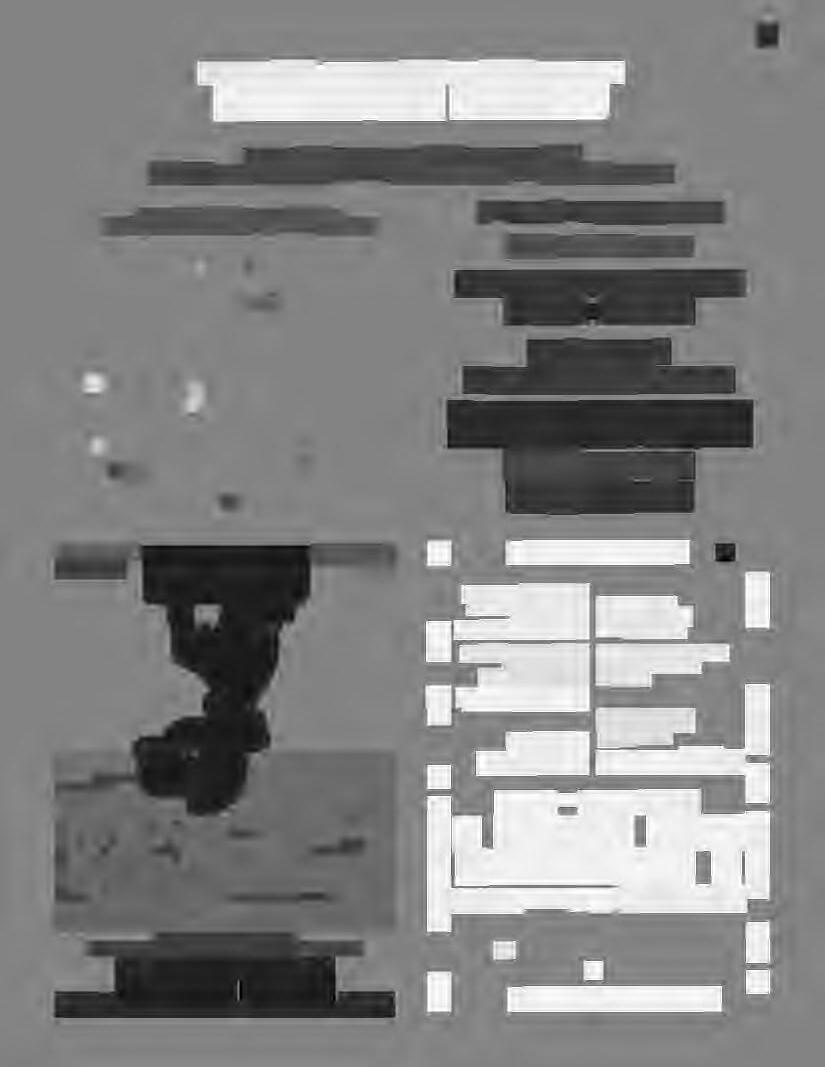
FORTHEAPPLIEDAND FINEARTCLASSESHAVEBEENCARE· SHOPSOVERTHEPAST25 YEARS,HAS NOW CREATEDHIS FULLYCHOSEN BYARTKANE, FOR BOTH THEIRABILITIES ONN SCHOOL THEARTKANEPHOTOWORKSHOPWILL AS ARTISTSAND AS TEACHERSTHESEINCLUDEFINEART: CONMENCECL.ASS£$THISSU,vMfRIN THEIDYLLICSEASIDE BRUCEDAVIDSON• TOM CARABASI• JUDY DATER• COMfv1UNITYOF CAPE1'1.AY,NEWJERSEYTHE'MEEKLONG LARRYFINK• RALPHGIBSON• GEORGEKRAUSE • DUANE WORKSHOPSWILLBEGINJUNE5THAND END SEPTEMBERMICHALS• ARNOLDNEW1'1.AN • ROSAMONDPURCELL • 1ST,1989,OFFERINGOVER75 WORKSHOPSIN 3 SEPARATEULO RAYMOND• COLE'NESTON• WILLIAMvVEGUiAN• DIVISIONS FOUNDATION: BEGINNERSTHROUGHINTER- GEORGETICE APf"LIED:SARAHMOON • DICKFRANK• MEDIATE,APf"LIED:ADVERTISINGAND EDITORIAL,FASHION ARTHURELGORT • SHEILAN\ETZNER • PATHill • w.ARIE STILLLIFE,ARCHITECTURE,PHOTOJOURNALISM,FINEART: COSINDAS• ARTKANE• JAY1'1.AISEL • BURTGUNN • PORTRAITS,THENUDE,LANDSCAPE,REPORTAGE,PERSONAL HENRYWOLF • FACILITIESINCLUDE8/W DARKROOMS, VISION A\50 BEINGOfFEREDARECl.ASSESIN PRINTING. J STUDIOS,CLASSROOMS, A CAMERASTORE, STUDIOLIGHTING,SELFPROMOTION,STOCK,EDITING. GRAPHIC DESIGN EVENING LECTURESGIVEN BY MASTERPHOTOGRAPHERS THE FOUNDATION COURSEHASBEENDESIGNEDAND PRCX3RAM'v\ED BYTHON\ASR01'1.A.PIK)FESSOROF PHOTOGRAPHY
8 8 rRA~V.-. ,,,.f•sti~•;,,.,s l11tf•1·11.,ti1111;1I B @PHOTOGRAPHY&8 8ARTCOMPETITION @ N,•11: ¥01•k - 1989 i 87~000AWARDS DEADLINE: i D open to all JUNE 23 photographers EXHIBITION: Juried by July 25-August 13 at Prominent Curators Art 54 Gallery D from American Museums Soho, New York City, NY 8 To receive your ARTITUDES, Dept. CQ1 0 8 application form P.O. Box 380 D write NOW to: Hartsdale, NV 10530 USA (914) 533.5333 IMPORTANT 19th & 20th Century PHOTOGRAPHS At AuctionMondayAPRIL24 3 PM and5 PM ALBUMS•BOOKS VINTAGEMASTERPRINTS Illustrated Catalogue$15 Postpaid Preview:Thurs-Sat 10 to 6; Sun 1 to 5 ••••••••••••••••••••••••••••••••••••••• CAPE IIIAl' ART"A~E ,OEWIERSEl' PHOTO WOR"SHOP "IT IS MYHOPETO EXPANDTHECURIOUSMIND,NOURISHTHECREATIVEMIND AND PRYOPEN THENARROWMIND."ARTKANE ARTKANE,ONE OF AMERICA'SMOSTCELEBRATEDPHOTOG- BESTAFFEDBYYALEMFAGRADUATES THEINSTRUCTORS RAPHERS,HAVINGPARTICIPATED IN INNUMERABLEWORK-
5PONS0~EOBY
P,ofes~I PhoiogrophyD,v,s,on CALL ART KANE PHOTO WORKSHOP, Ill FIFTH AVENUE.NEW YORK,NY 10003, (212) 529-7093 rn•nrnrn··'· AN IMAGE BANKCOMPANY "Thirteen Inch Mortar;' one of 134 mounted Albumen Prints in an importam U.S. Military Railroad Album by A. J. Russell, circa 1864. For further information, or to disc1.,lssconsignments to our next Photography Auction (Fall 1989), please contact Denise Bethel, Vice President at (212)254-4710. SWANNGALLERIES 104East25Street,NewYork,N.Y.10010{212)254-4710 26
EastmanKodak Company
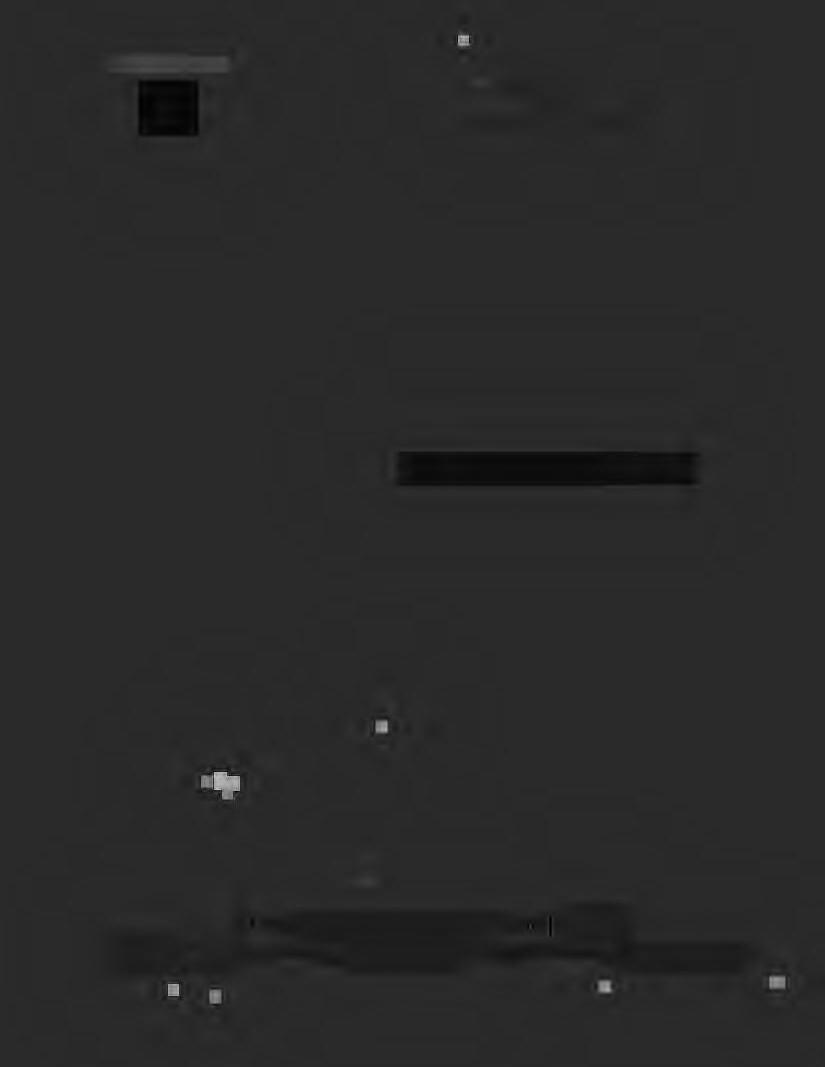
WhereverPhotographersGatherToSharpenTheirSkills, TheyShareAC.OmmonFocalPoint.
At Kodak,webelievethemostimportantthing a photographercandevelopisability. Whichiswhywe'reproudtobea sponsorofthisworkshop. c Eastma•KodaliCompo•v. 1988 •
KoDAK ProfessionalFilm.
FINEPHOTOGRAPHS
San Francisco Auction
Thursday, April 6, 1989
Photographs Sold to Benefit The Friends of Photography and the Ansel Adams Center Preview Exhibition: April 1, 2, 3
Over 250 lots including contemporary images and vintage prints by regional and international photographers.
Complete condition reports for both auctions are available upon request. For further information regarding the auctions or consigning property to future auctions, please call Susan Friedewald at 415/861-7500 ext.306. In Los Angles, call 213/850-7500.
To order an illustrated catalogue for $18 by mail, call 415/861-7500 ext.251 Ansel Adams, El Capitan, Sunrise, Yosemite Valley, Califomta. 1956, printed 1959, gelatin silver print, 9 5/8 x 7 1/2 inches, signed in pencil on the mount. estimated: $2,000/2,500. To be sold on April 6th.

Los Angeles Auction
Tuesday,Aprilll, 1989
Auction to be held simulataneously in San Francisco and Los Angeles Preview Exhibition: April 8, 9, 10
Featuring over 250 lots of 19th and 20th centun, images including a fine collection of daguerreotypes and ambrotypes, mammoth plates by Carleton Watkins, Eadweard Muybridge, Wm. Henry Jackson and Frank J. Haynes and pictorial images from California by Anne Brigman, Dorothea Lange and Edward Weston.
28
=====!!!!!!SINCK11165"""'===="" Butterfield&Butterfield AUCTIONEERS APPRAISERS 220 San Bruno Ave.• San Francisco, CA 94 I 03 415/861-7500 7601 Sunset Boulevard•Los Angeles, CA 90046 213/850-7500 GEORGE
GREEN are represented
MARTY CAREY/PICTURES GALLERY Box 21,
NY 12495 • 914/688-5865 GoldCampaign,1985
GEORGEHOLZ
HOLZ and the Estate of RUZZIE
by
Willow,
T SidCesar,1950's
RUZZIE GREEN
NotedBooks
Publicationsrecentlyreceivedby the Centerlibrary:
ELLIOTTERWITT
PERSONALEXPOSURES
Published1988by PenguinBooks
AvailablefromW.W.Norton&Company,500FifthAvenue,NewYork, NYIOI10for$60/hardcover
PROVENCEMEMORIES
PHOTOGRAPHSBYDENNISSTOCK
Introductionby Philip(onisbee
Published1988by Little,Brown&Company
AvailablefromLittle,Brown&Co.,34BeaconStreet,Boston,MA02136 for$SO/hardcover
THERISEOFPHOTOGRAPHY
1850-1880:THEAGEOFCOLLODION
Textby HelmutGernsheim
Published1989byThamesand HudsonInc.
AvailablefromW.W.Norton&Company,500FifthAvenue,NewYork, NY10110for$65/hardcover
PHOTOGRAPHY FOURTHEDITION
Textby BarbaraLondonUptonwithjohnUpton
Published1989by Scott,ForesmanandCompany
AvailablefromScott,Foresman&Co.,1900EastLakeAvenue,Glenview, IL60025for$22/softcover
WORLDOFWONDERS
A TRIPTHROUGHNUMBERS
Photographs by StarrOckenga
Poemand paintedbackgrounds by EileenDoolittle
Published1988by HoughtonMifflinCompany
AvailablefromHoughtonMifflinCo., 2 ParkStreet,Boston,MA02108 for$16.95/hardcover
-K. Kenyon

U.S.:$15 Canada &Mexico:$23 International:$35 Startyoursubscriptionnow.Sendcheckormoneyorderto:
WOODSTOCK PHOTOGRAPHY WORKSHOPS
Nowin its twelfthseason,theWorkshopseriesattractsmasterphotographerswhosharetheirlivesandimageswithworkshopparticipants. Intensivelow-costworkshopsprovide a "meetingoftheminds"aswell as "handson" work,problemsolvingand supportivediscussion.
JULY
FREDRITCHINSat./Sun.1-2
NewStrategies in Photojournalism
DEBORAHTURBEVILLESat./Sun.8-9
fashionPhotography
CHRISTOPHERJAMESSat./Sun.15-16
TheExtendedPrint
MARIECOSINDAS:MasterClass Sat./Sun.22-23
PortraitsandStilllife
LENJENSHELSat./Sun.29-30
TheColorlandscape
AUGUST
WILLFALLERSat./Sun.5-6
TheNudeas ImageandEmotion
SHEILAMETZNERSat./Sun.12-13
Objectsof Desire
ARNOMINKKINENSat./Sun.19-20
ThePortraitandtheNude
LUCYJOHNSONSat./Sun.26-27
Introduction to lighting
SEPTEMBER LARRYFINK Sat./Sun.2-3
Discovering theIntuitive
GEORGETICE Sat./Sun.9-10
MakingthefinePrint
DUANEMICHALS:MasterClass Wed./Thurs.13-14
PhotographyandReality
WENDYHOLMESSat./Sun.16-17
ThePlatinumPrint
EUGENERICHARDSSat./Sun.23-24
PhotographingPeople
JUDYDATERMon./Fri.25-29
ThePortraitandtheSelf-Portrait
Workshopregistrationfeesrangefrom$140to $350;MC/Vaccepted. Pleasecall with yourquestions(914-679-9957) or writefor fully illustratedbrochureto (PW,59TinkerStreet,Woodstock,NY12498. The 1989Workshop is sponsoredby the EastmanKodakCompany ProfessionalPhotographyDivision.
SUBSCRIBE!
CENTERQUARTERLY
TheCenterfor Photography at Woodstock 59 TinkerStreet,Woodstock,NY12498
29 ...

~ZEN Ir THERRTS
SpringandSummerretreatsintheCatskillMountains
Zen Photography, Bonsai, Watercolor, Zen Gardening, Allen Ginsberg, Tea Ceremony, Zen Brush Painting, Ikenobo Shakuhachi (Bamboo Flute), Noh Theatre, Haiku,
AU retreats integrated with Zen meditation and Zen monastic training. Contact: ZEN MOUNTAIN MONASTERY, P.O. Box 197WP, South Plank Road, Mt. Tremper, NY 12457 (914) 688-2228
CJ!i~~H~~!~~t~,!RI!~ Private Bath wl Every Room Special Rate Monday-Thursday TV• Open All Year Woodstock,New York 12498 914-679-8211 WOOOsfutl(s ,.r",;o/7 = t)~Jtti roob _ --===- 1~1C€nt€~--B~~k*-;,R€ 10 MILL HILL ROAD WOODSTOCK, N. Y. 12498 OPEN 7 DAYS 914-679-9900 THE EXPOSURESCJ\LLERY :-: NICK ZUNGOLI PHOTOGRAPHS 31 Changing Exhibitions by guest photographers g Call or write for gallery calendar BOX 5, KING'S HIGHWAY, SUGAR LOAF, N.Y. 10981 GALLERY HOURS: WED. -SUN. 11 to 5 (914) 469-9382 ,STOCK 2-6 MILL HILL ROAD, WOODSTOCK, N.Y. 12498 679-2115 or 8722 • VALLEYCOURIER & DELIVERYSERVICE,INC. EAST CHESTER STREET BYPASS, KINGSTON, NEW YORK 12401 30 24 HRS. 914/336-4074 SAME DAY SERVICE [J)pstate /Jndia Enterpri.t,e.'i CREATIVEVIDEOSERVICES ½" & ¾" formats Nathan Koenig • (914) 246-9995 Duchesse Anne Hotel Restaurant Fra111;ais Creperie Bretonne 4 Miller Road Mt. Tremper. NY 12457 914-688-5260 Double/Single Rooms Available, $30 & up For Fine Foods, Shop B A Z A R 17 Tinker St., Woodstock,NY 679-5434 Make it a point to visit 0ur La Bella pasta For hesh Pasta anJ Ravioli Route 28 BetweenWoodstock& Kingston Eat In or Take Out 331-9130 11 SfR.WINE& LIQUORS 33 R STR. WOODSTOCK, 6792669 THE CONNOISEUR'S a-IOICE FOR FINE WINES Woodstock's Oldest 914-679-9479 Guest Ho~~ if~i~'-Jwinqa6/es ;;;~-.:-'I of.Woodsloch. ny I .,• , /,. tit• Cat~lti/1,, • _..:.i The Hoffmann Family 73 TINKER STREET, WOODSTOCK, N.Y. 12498 COLO~~l lQ>~©M!CW W O O O S l O t K n KODAK FILM DISCOUNT PHOTOFINISHING 679-2222 679-2221
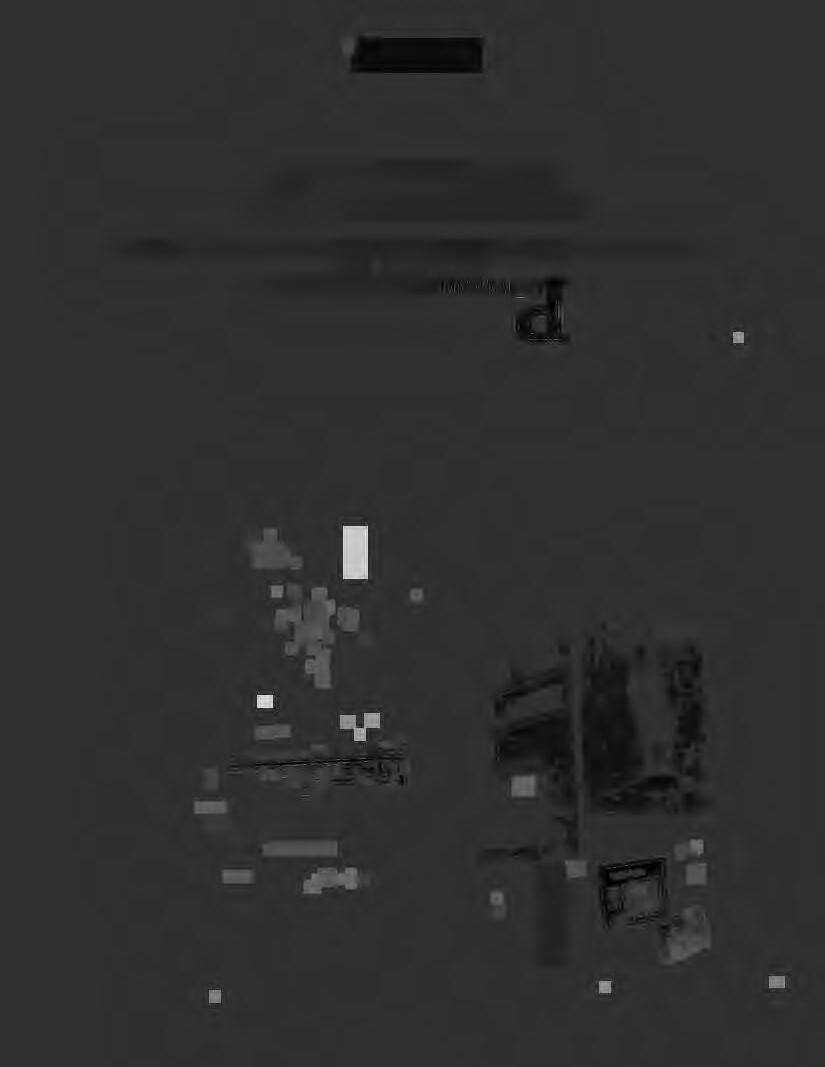
I?OIOGRAPH BY TAMARRA KAIDA "EVOLUTION;' 1987 ENLARGEMENT PRINTED FROM POLAROID POSITIVE/NEGATIVE FILM
INTERNATIONAL POLAROID COLLECTION CAMBRIDGE, MASSACHUSETTS 02139 CONTACT: BARBARA HITCHCOCK
' • l ,,..!:'.~~ Ai r.:..=~..:{a:..:..:..-.:.=-~- J~;;·.,
Polaroid®
addresscorrectionrequested

one-stopshopping
Sprint Systems of Photography manufactures a complete line of photochemistry for most darkroom procedures, including B&W negatives, prints, and reversal slides, Color films and prints, and special applications such as litho films, pyro negatives, and hand-sensitized prints.
Sprint products offer some truly original advantages and improvements:
All are liquids that may be diluted and mixed accurately in any amount at room temperature. No powders, hot water, or large storage bottles are needed.
Each liquid is a component of a modular system. Most have more than one application, and fewer separate products are needed to stock a complete darkroom.
Working solutions process a high volume of prints or films per liter Compare the capacity of Sprint chemistry with other brands, per liter and per dollar.
Every solution works quickly and efficiently without sacrifice of performance, to reduce total processing time and increase archival permanence.
Toxicity and odors have
been minimized and allergenic ingredients have been omitted whenever possible.
We invite you to call us collect for more information, and then to try our chemistry in your own darkroom. The results may be the best reason of all to use SPRINT.
PTHE CENTERFO~PHOTOGRAPHY Al WOODSTOCK19TINKERSTREETWOODSJO(KNEWYORKI1498 Non-ProfitOrg. U.S.Postage PAID PermitNo.33 Woodstock,NY 12498 w
[]J;l[1~j SYSTEMS OF PHOTOGRAPHY, INC. ( _! /~ _,. 100 Dexter Street, Pawtucket, RI 02860 Tel. (401) 728-0913 Monday-Thursday




 by Gary Green
by Gary Green



























